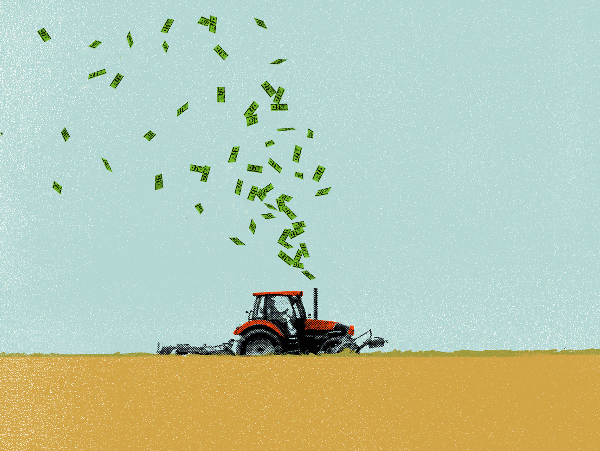|  Illustration by Tyler Comrie; Source photograph from Getty Domestic sales of organic food amount to around sixty billion dollars a year, and yet, despite a system of national certification, there is no way to confirm that a crop was grown organically. “The real difference . . . between a ton of organic soybeans and a ton of conventional soybeans is the story you can tell about them,” Ian Parker writes, in his riveting account in this week’s issue about “the largest-known fraud in the history of American organic agriculture.” At the center of the scheme was Randy Constant, a man with a Dickensian name and a degree in agricultural economics, who made a fortune by “passing off non-organic grain as organic grain.” Constant emerges as a classic American figure—the beguiling salesman offering something too good to be true who leaves enemies in his wake. People recall him as “straightforward, healthy, wholesome,” and also as “one of these guys you have to worry about,” “a bullshitter,” and worse. Parker’s story identifies the many gaps and inconsistencies in the regulation of agriculture. But it points, also, to a problem that is more general and harder to resolve: how people at every step along the way, from farmers, to inspectors, traders, and customers, are often willing to accept the good story, or the simple story, or the one they want to believe. “In a market that often seems to value a certificate of authenticity over authenticity,” Parker writes, of Randy Constant, “all he had to do was lie.” —Ian Crouch, newsletter editor Read “The Great Organic-Food Fraud.” Ian Parker has also written about the renovation of HGTV and the many deceptions of the suspense novelist Dan Mallory. |
No comments:
Post a Comment